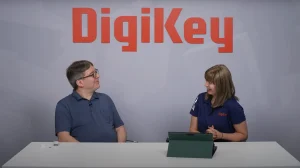How IoT Vibration Sensors Are Transforming Industrial Monitoring
How IoT Vibration Sensors Are Transforming Industrial Monitoring 
Vibration sensors are essential tools in modern industries, enabling real-time monitoring, predictive maintenance, and improved operational efficiency. As part of the Internet of Things (IoT) ecosystem, these sensors provide critical data that helps prevent mechanical failures, reduce downtime, and optimize equipment performance.
A vibration sensor detects mechanical movements and converts them into electrical signals. These signals help identify potential issues like wear and tear, misalignment, or structural weaknesses in industrial equipment. By integrating these sensors with IoT technology, businesses can monitor machinery remotely, analyze performance trends, and implement maintenance strategies before breakdowns occur.
Industries such as manufacturing, energy, automotive, aerospace, and infrastructure all benefit from IoT-enabled vibration sensors. In manufacturing, these sensors help detect imbalances in rotating equipment, reducing unexpected shutdowns. In the energy sector, they ensure turbines and generators function efficiently. Structural monitoring applications use vibration sensors to track shifts in bridges and buildings, preventing catastrophic failures.
TE Connectivity offers advanced solutions with its 85x1N (Bluetooth® Low Energy) and 89x1N (LoRaWAN®) series wireless vibration sensors. These sensors provide high-performance vibration monitoring with a wide bandwidth of up to 10 kHz. They are designed to withstand harsh industrial environments with an IP66/IP67 rating and have a battery life of up to 10 years. The 85x1N series utilizes Bluetooth® for short-range communication, while the 89x1N series leverages LoRaWAN® for long-range data transmission, making them ideal for remote industrial applications.
By incorporating IoT vibration sensors into industrial systems, companies can significantly reduce maintenance costs, improve efficiency, and extend the lifespan of critical machinery. The future of industrial monitoring lies in smart, connected solutions that provide actionable insights, and vibration sensors are at the forefront of this transformation.












